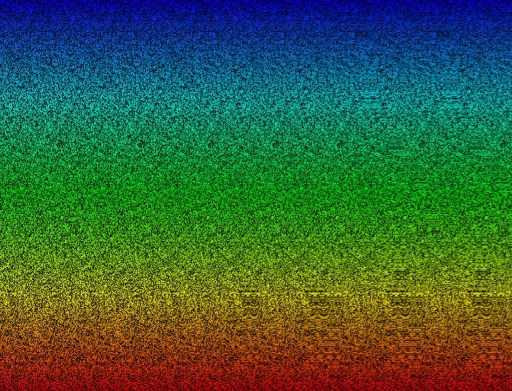How To View An Autostereogram (It’s How Reading Comprehension Happens)

If you’ve properly viewed an autostereogram, you know that it can be hard to get the picture — literally. An autostereogram is an image that, at first sight, looks like random dots or pattern sequence (click to view original image at instructables.com):

Some people have a hard time figuring out how to view an autostereogram such that the 3D image emerges; some people get it in a matter of minutes. It can be hard to explain, to the former, how to view the image. The following is one method:
Focus your eyes beyond the image, not on it. Pay attention to the image itself, even though your focus is beyond it. Don’t stare; keep your eyes flexible. At some point the 3D image will become visible.
There are other ways to “get” an autostereogram, but all methods involve a dual focus. If you keep your eye steady on the image, you’ll probably never get it.
What’s amazing here is how similar this is to the learning process (in the case of written material): If you keep looking only at the words in front of you, you won’t get the “broad picture.” Similarly, if you focus exclusively on the broad picture — that is, what the material is about, and what you’re trying to learn or understand — you won’t get it either.
Similarly, if you read too fast — or too slow — comprehension will be difficult. You need to focus on the picture that the material is building... while paying attention to the words you’re reading right now.
If you think about the minute details of an idea or concept, you’ll miss the point. On the other hand, if you focus exclusively on “what the writer is trying to say,” you’ll again miss it.
(The analogy is specific to written material, though. It doesn’t hold for, say, when you’re learning to drive: You need to focus exclusively on the accelerator, steering, and the road. Focusing on where you’re getting to, or how the car works, won’t help!)
There’s nothing new here. The idea of dual focus is implemented all the time by writers and educators, and it is employed all the time by readers and learners. It’s fascinating how closely an optical illusion mirrors the learning process.
But then again, with an autostereogram, your eyes (re)construct 3D data from a 2D image. Isn’t that what learning is about — (re)constructing three-dimensional knowledge from two-dimensional words?
